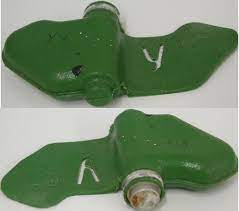Article Title: Butterfly Mine
11-08-2022
Defence & Internal Security Prelims Plus
The UK Ministry of Defence, in its intelligence assessment of the ongoing war in Ukraine, has and sounded an alarm on the possible use of PFM-1 series ‘Butterfly Mines’ by the Russian military in Donetsk and Kramatorsk.
PFM-1s were used to devastating effect in the Soviet-Afghan War where they allegedly maimed high numbers of children who “mistook them for toys,” .
The PFM-1 and PFM-1S are two kinds of anti-personnel landmines that are commonly referred to as ‘Butterfly mines’ or ‘Green Parrots’.
These names are derived from the shape and colour of the mines.
The main difference between the PFM-1 and PFM-1S mine is that the latter comes with a self destruction mechanism which gets activated within one to 40 hours.
The ‘Butterfly mine’ has earned a reputation for being particularly attractive to children because it looks like a coloured toy.
It is very sensitive to touch and just the act of picking it up can set it off.
Because of the relatively lesser explosive packed in this small mine, it often injures and maims the handler rather than killing them.
These mines are also difficult to detect because they are made of plastic and can evade metal detectors.
The mine, a pressure exceeding 5 kg will activate the mine which contains 40g of explosive.
The anti personal mines are banned by international convention on land lines but Russia and Ukraine are not signatories to it.
However, there is a 1996 Amended Protocol II to the Convention on Certain Conventional Weapons-the Landlines Protocol to which Russia and Ukraine are signatories.

 POLITICAL SCIENCE & IR HYBRID BATCH ORIENTATION : 20-11-2024
POLITICAL SCIENCE & IR HYBRID BATCH ORIENTATION : 20-11-2024